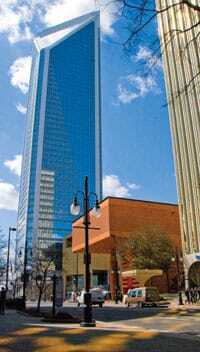There are not enough people with long-term vision, particularly when it comes to investments that can significantly reduce energy use, Duke Energy Chief Executive Officer James E. Rogers said in his keynote address at the ULI Spring Meeting in Charlotte, North Carolina, in May.
Duke Energy, which is poised to become the nation’s largest utility pending approval of a merger with Raleigh-based Progress Energy, is based in Charlotte’s Uptown neighborhood, the city’s commercial core. Rogers has been the driving force behind Envision Charlotte, a pilot project with the initial goal of reducing electricity use in Uptown Charlotte by 20 percent in five years (2016). A key part of Envision Charlotte is a model program, Smart Energy Now, that involves 70 buildings in Uptown. The program’s hallmark: each building’s energy use is monitored, and kiosks installed in each participating building’s lobby shares aggregated data on energy use, along with information on how to reduce those numbers.
One goal of Envision Charlotte is to demonstrate to regulators that incentives to conserve energy can be effective. The Duke Energy Center in Uptown Charlotte is the world’s largest high rise rated Platinum under the Leadership in Energy and Environmental Design (LEED) program, Rogers noted. “It implies that we’re walking the talk.”
“Our business is the most capital-intensive business in the world,” he said. Noting that a power plant lasts 40 years, he said the utility is accustomed to long-term paybacks, even as it must report to shareholders on a quarterly basis. But many real estate investors and operators hesitate to make capital investments in energy conservation if the paybacks are to be realized over a long period.
Regulators also can be an obstacle to utilities investing in emerging energy-saving technology, he said. “They’ll let us build a $2.3 billion coal plant, but they’re reluctant to invest on the other side of the meter,” he said, noting that regulators are afraid the utility will raise prices to cover the expenditure, but fail to produce the savings.
“I believe the cleanest power plant that I will build in the future is the one that I don’t build,” Rogers told ULI members.





